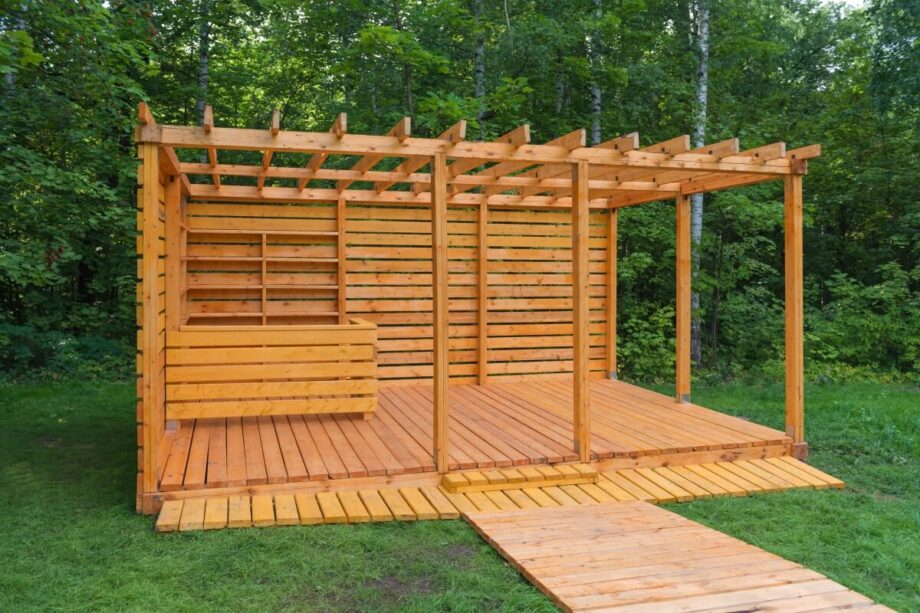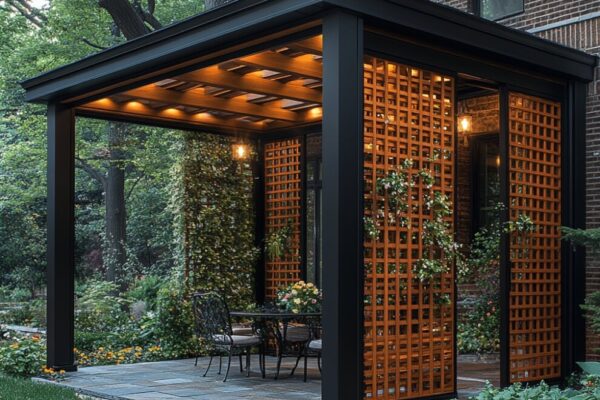Contents
- Understanding the Appeal of Wooden Slats in Modern Architecture
- Versatility of wooden slats in architectural design
- Benefits of incorporating wooden slats in modern projects
- Creative uses of wooden slats in interior design
- How can wooden slats transform your home design?
- Most popular questions and answers
Understanding the Appeal of Wooden Slats in Modern Architecture
Wooden slats have become a cornerstone in the world of modern architecture due to their versatility, aesthetic appeal, and functional benefits. Their ability to seamlessly blend with various design styles makes them a popular choice among architects and interior designers. Wooden slats not only enhance the visual warmth of a space but also offer sustainable and eco-friendly solutions which align perfectly with the current trends towards environmentally responsible building practices.
Versatility of wooden slats in architectural design
The versatility of wooden slats in architectural design is unparalleled. They can be used in a variety of settings, from residential homes to commercial spaces, creating dynamic and engaging environments. Wooden slats provide a flexible option for both exterior and interior applications. Their adaptability in design allows for creative and unique implementations that can transform the way a space is perceived. Architectural features such as ceilings, walls, and facades can dramatically benefit from the rich texture and linear geometry that wooden slats provide.
Furthermore, wooden slats are available in an array of finishes and wood types, allowing designers to tailor their choice to suit specific project requirements. Whether aiming for a rustic charm with reclaimed wood or a sleek, modern finish with polished timber, wooden slats can accommodate a range of aesthetic goals. This dynamic range not only helps in achieving the desired visual outcome but also plays a significant role in influencing the mood and functionality of a space.
Benefits of incorporating wooden slats in modern projects
Integrating wooden slats into modern architectural projects offers a multitude of benefits that go beyond mere aesthetics. Wooden slats are known for their durability and long-lasting nature, particularly when they are treated to resist weathering and pests. They are also excellent for improving acoustics in a space. By disrupting sound waves and reducing echo, wooden slats can significantly enhance the sound quality and comfort within an environment, which is particularly important in spaces such as concert halls, classrooms, and open office settings.
In addition to these functional benefits, wooden slats offer environmental advantages. They are a renewable resource and can be sourced sustainably, thereby reducing the carbon footprint of a building project. The natural insulation properties of wood also contribute to energy efficiency, providing thermal comfort while reducing reliance on heating and cooling systems. This not only benefits the environment but also assists building owners and occupants by lowering energy costs.
- Sound Insulation: Wooden slats have significant acoustic properties, absorbing and minimizing noise pollution.
- Environmental Sustainability: As a natural material, wooden slats are recyclable and biodegradable, supporting eco-friendly building practices.
- Aesthetic Flexibility: With various wood types and finishes, wooden slats can adapt to any design style, from the traditional to the contemporary.
- Durability and Maintenance: They offer outstanding longevity, especially when treated properly, and require relatively low maintenance.
Creative uses of wooden slats in interior design
Interior designers are continuously finding innovative ways to incorporate wooden slats into their projects, harnessing their versatile properties to redefine interior spaces. Wooden slats are frequently used to create distinctive feature walls that add depth and texture to a room, drawing the eye and serving as a focal point. The natural grain of wood brings warmth and richness that complements both minimalist and elaborate interior themes.
Moreover, wooden slats serve as excellent partitions. In open-plan environments, they provide much-needed separation without obstructing light or creating a claustrophobic feel. They act as semi-transparent barriers that allow for privacy while maintaining a sense of openness and continuity within the space. Designers also often utilize wooden slats on ceilings to add dimension and interest, with possibilities to install lighting fixtures seamlessly within the slats, further enhancing the functional and artistic value of the design.
How can wooden slats transform your home design?
There is a growing interest in the potential of wooden slats to transform home environments, offering both aesthetic and functional enhancements. When considering How can wooden slats transform your home design?, it is vital to understand their role in enhancing the spatial and ambient qualities of a home. Wooden slats can create sophisticated divider solutions, improving layout without sacrificing natural light flow.
Wooden slats are particularly effective in reimagining outdoor living spaces. Used as pergola roofing or deck surrounds, they provide shade and comfort while integrating seamlessly with outdoor elements. Their natural resistance to weather conditions makes them a smart choice for exterior applications. Additionally, using wooden slats in landscaping and garden design enhances continuity between interior and exterior spaces, lending a harmonious transition that bolsters the appeal and usability of the home environment.
In conclusion, the popularity of wooden slats in modern architecture is driven by their unmatched combination of aesthetic appeal, functional versatility, and eco-friendly qualities. Their application across different settings, from residential to commercial, underscores the dynamic character that wooden slats bring to architectural and interior design projects. Whether used for their visual impact, environmental benefits, or functional advantages, wooden slats continue to captivate designers and architects, cementing their place in contemporary building practices. As our appreciation for sustainable and innovative design solutions grows, so too will the inventive applications of wooden slats within our spaces.
Most popular questions and answers
Why are wooden slats a popular choice for acoustics?
Wooden slats are commonly used in acoustic design because of their excellent sound absorption properties. They help to reduce noise levels by disrupting sound waves and minimizing echoes, creating a more comfortable acoustic environment. Their natural material and varied surface also contribute to their effectiveness in sound management.
What are the environmental benefits of using wooden slats?
Wooden slats are made from a renewable resource, which means they can be sourced sustainably and contribute to eco-friendly building practices. They are recyclable and biodegradable, reducing environmental impact over their lifecycle. Additionally, wooden slats help in lowering a building’s carbon footprint by acting as natural insulators.
How do wooden slats contribute to energy efficiency?
Wooden slats contribute to energy efficiency through their natural insulating properties, which help regulate indoor temperatures. This reduces the need for artificial heating and cooling, leading to lower energy consumption. The efficient thermal management they provide makes them an attractive option for sustainable building designs.
Can wooden slats be used in outdoor settings?
Yes, wooden slats can be used in outdoor settings when appropriately treated to resist weathering and moisture. They provide aesthetic appeal and functional benefits such as shade and privacy in outdoor integrations. Their durability and natural resistance make them suitable for decking, pergolas, and garden partitions.
What design styles do wooden slats complement most?
Wooden slats are remarkably versatile and can complement a wide range of design styles, from modern and minimalist to traditional and rustic. Their natural texture and warmth add character to any space, making them suitable for both interior and exterior designs. They effortlessly blend with various decor themes, enhancing a building’s overall aesthetic.




